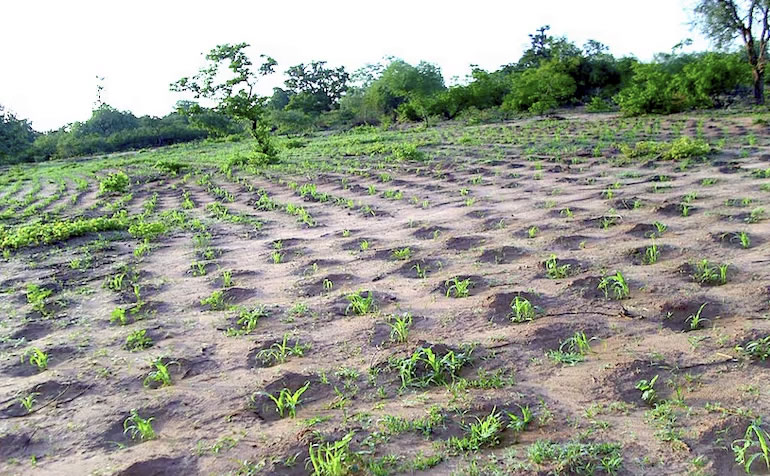
For almost two decades, eleven Sahelian countries have been promoting an ambitious initiative to halt the advance of the desert by restoring degraded land over 8,000 kilometres.
In the midst of a climate emergency and extreme temperatures, Africa offers a response that is as monumental as it is hopeful: the Great Green Wall, a project that crosses the north of the continent from the Atlantic to the Red Sea, with the aim of halting desertification and revitalising the Sahel region.
Launched in 2005 by the then presidents of Nigeria and Senegal and subsequently endorsed by the African Union, the initiative covers eleven countries: Senegal, Mauritania, Mali, Burkina Faso, Niger, Nigeria, Chad, Sudan, Ethiopia, Eritrea and Djibouti. Far from being just mass reforestation, the Great Green Wall proposes a comprehensive restoration of degraded ecosystems, adapted to the conditions of each territory.
"The threat is not the Sahara, but the degradation of the Sahelian lands, which lie just to the south and have historically been productive," explains Jean-Marc Sinnassamy of the Global Environment Facility (GEF). For decades, desertification has had devastating effects: loss of biodiversity, disappearance of wetlands, forced migration and impoverishment of entire communities.
Despite progress - such as the restoration of millions of hectares in Niger and Senegal - the project faces enormous challenges. It is estimated that $33 billion will be needed by 2030 to restore 100 million hectares, sequester 250 million tonnes of carbon and generate 10 million green jobs. In 2021, during the One Planet Summit, contributions of more than $14 billion were announced.
One of the biggest lessons learned has been to debunk myths: it's not just about planting trees, but about promoting sustainable practices with strong community roots. "It is possible to restore soils without planting a single tree, as long as local communities are involved and lead the process," says Sinnassamy.
Among the pioneers in this struggle is Yacouba Sawadogo, a Burkinabe farmer known as the man who stopped the desert, who adapted traditional farming techniques to reclaim arid land. His method enabled the restoration of three million hectares and earned him the Right Livelihood Award, considered the "alternative Nobel" for ecology.
Contrary to what might be assumed, population growth in parts of the Sahel has favoured landscape regeneration. According to geographer Chris Reij, in Niger, population growth has encouraged farmers to protect trees and soils, regenerating five million hectares: "It has been the biggest ecological transformation on the continent.
However, insecurity, political instability and terrorism remain major obstacles to consolidating achievements. Even so, the project's promoters remain optimistic: "65 % of the population is under 25 years old. If they are supported and trained, the new generations - especially women, the true guardians of resilience - can lead the way to a greener and more liveable Sahel," Sinnassamy concludes.
Sources: lanacion.com.ar | @BBCNews 05/04/2025
